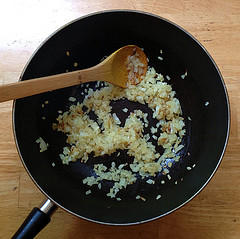Have you heard of oil pulling? This new holistic health trend, which is actually an ancient detoxification remedy, is said to boost overall health simply by swishing oil around the mouth once daily. The oil emulsifies with saliva in the mouth, becoming a cleansing agent that removes harmful bacteria, toxins, and plaque from the teeth and gums. The practice is also said to ease sinus congestion. But does oil pulling actually work? That's for you to decide—after checking in with your doctor or dentist first, of course.
If you'd like to give oil pulling a test spin, here's a handy guide to get you started.
1. Choose your oil.
The oils recommended for oil pulling are coconut, sesame, olive, and sunflower. You'll only need one tablespoon per pulling. If you choose coconut oil, let it liquefy before beginning your session.
2. Swish—and then swish some more.
Swish the oil around your mouth, just as you would with mouthwash. "Pull" the oil through your teeth. Your goal is to swish the oil until it becomes viscous and white. It usually takes 10 to 20 minutes to achieve this consistency, although beginner pullers can work their way up to that time.
3. Spit and rinse.
Once you've reached your allotted time, spit the oil into a trash can—not the toilet or sink, as the oil can clog pipes. (Don't swallow the oil!) Rinse your mouth with warm water, then brush your teeth. How often you practice oil pulling is up to you, although optimal benefits are said to achieved when oil pulling is performed several times per week.
Oil Pulling With Coconut Oil to Transform Your Dental Health [Authority Nutrition]
Oil Pulling: The Habit That Can Transform Your Health [Food Matters]
Oil Pulling for Oral Health [Wellness Mama]
What is Oil Pulling? [Coconut Oil Pulling]












 Equal Housing Opportunity
Equal Housing Opportunity